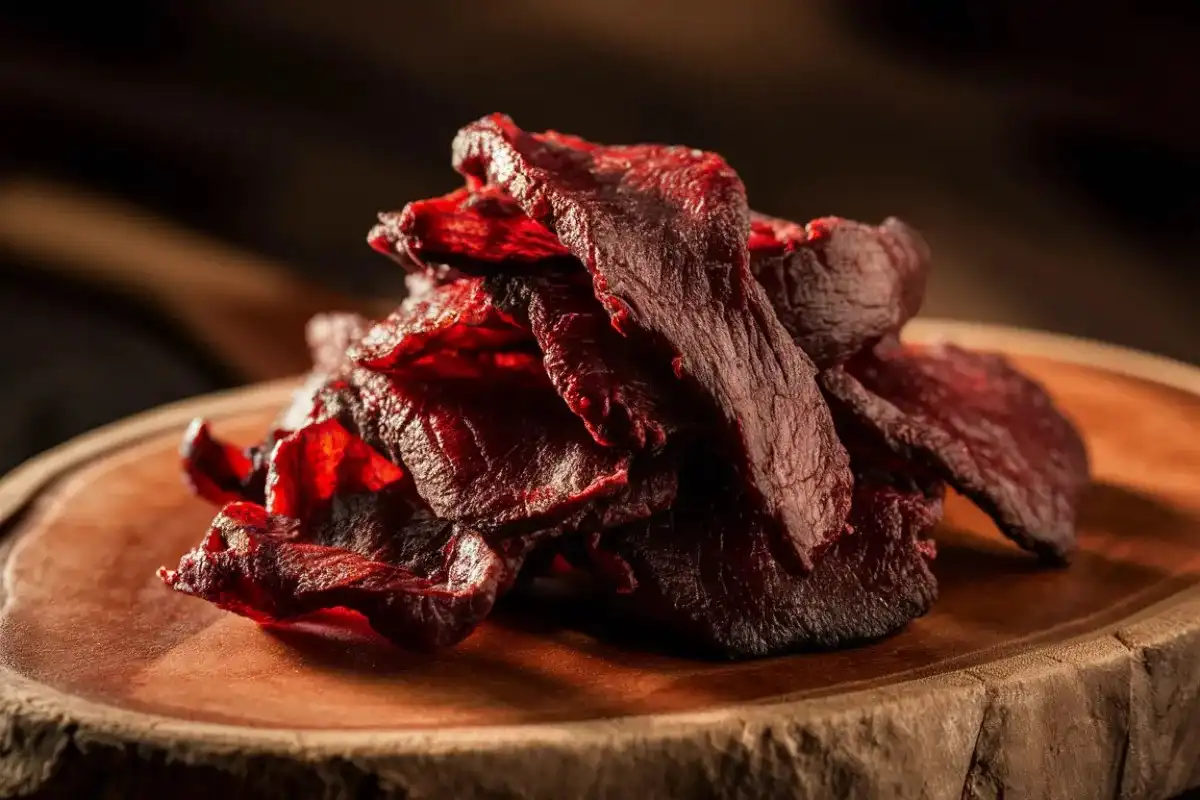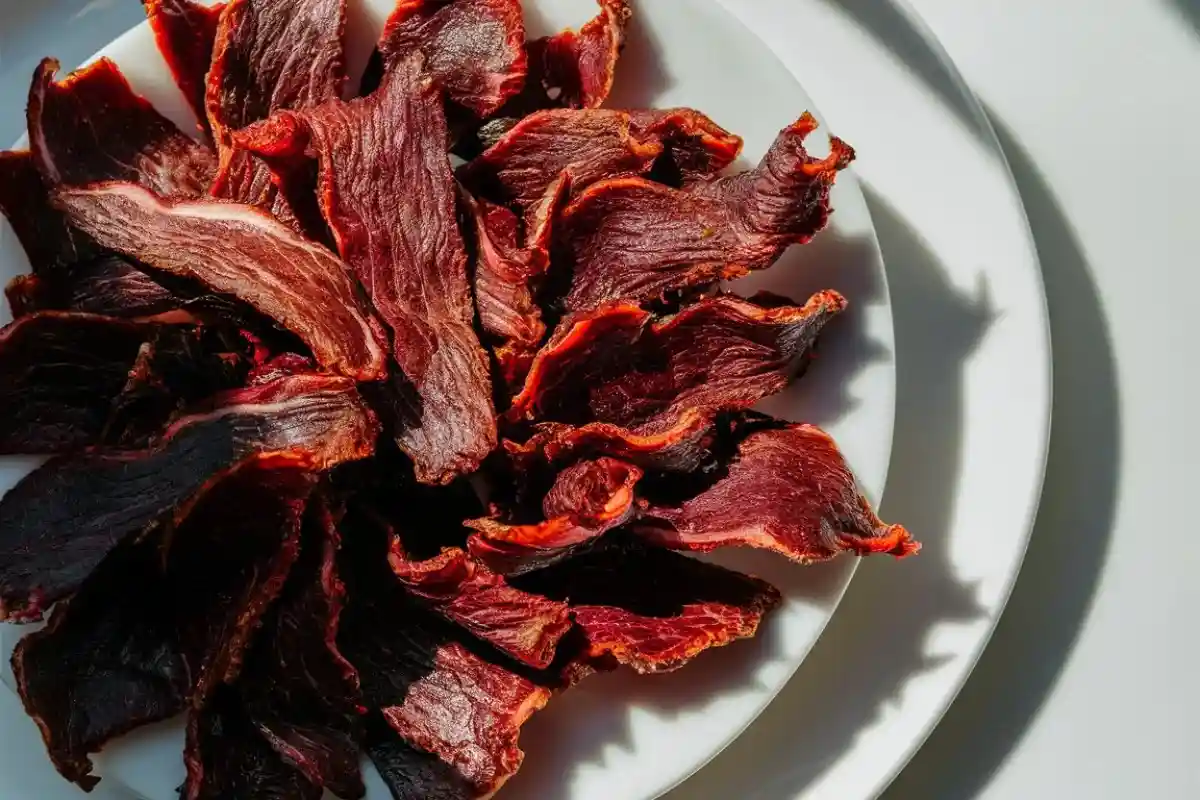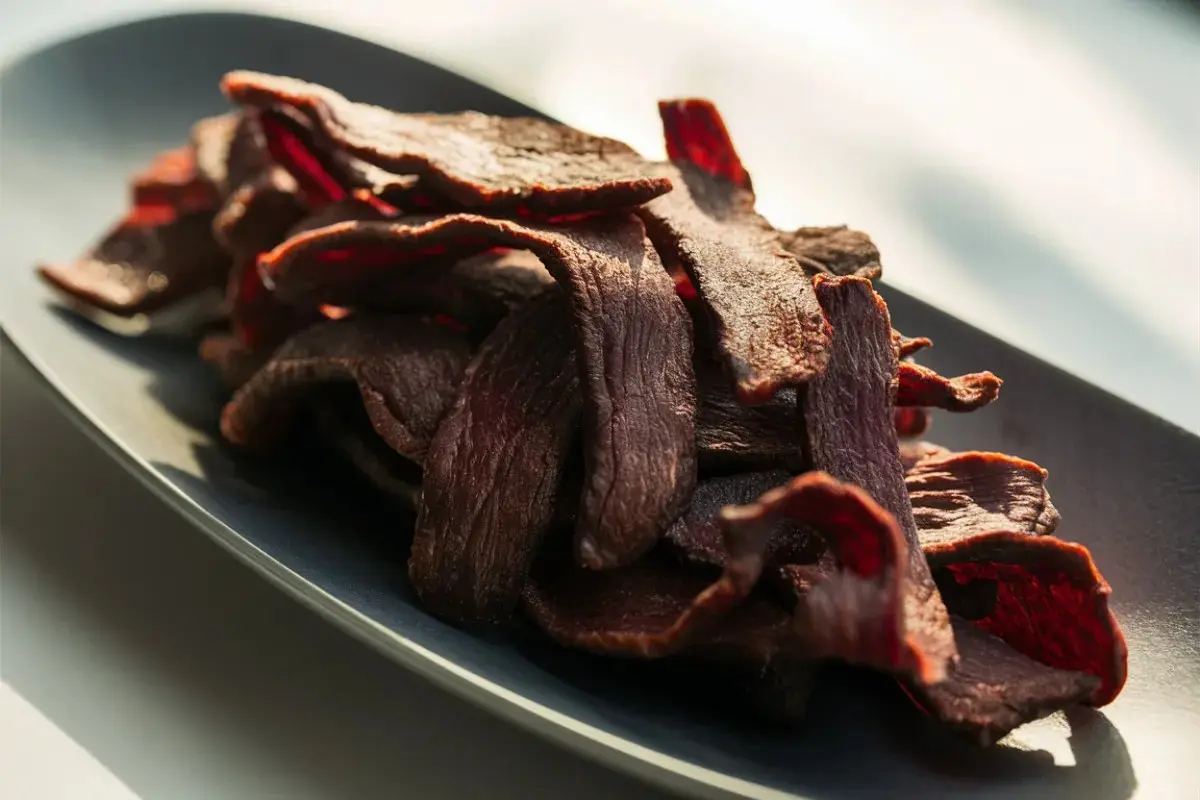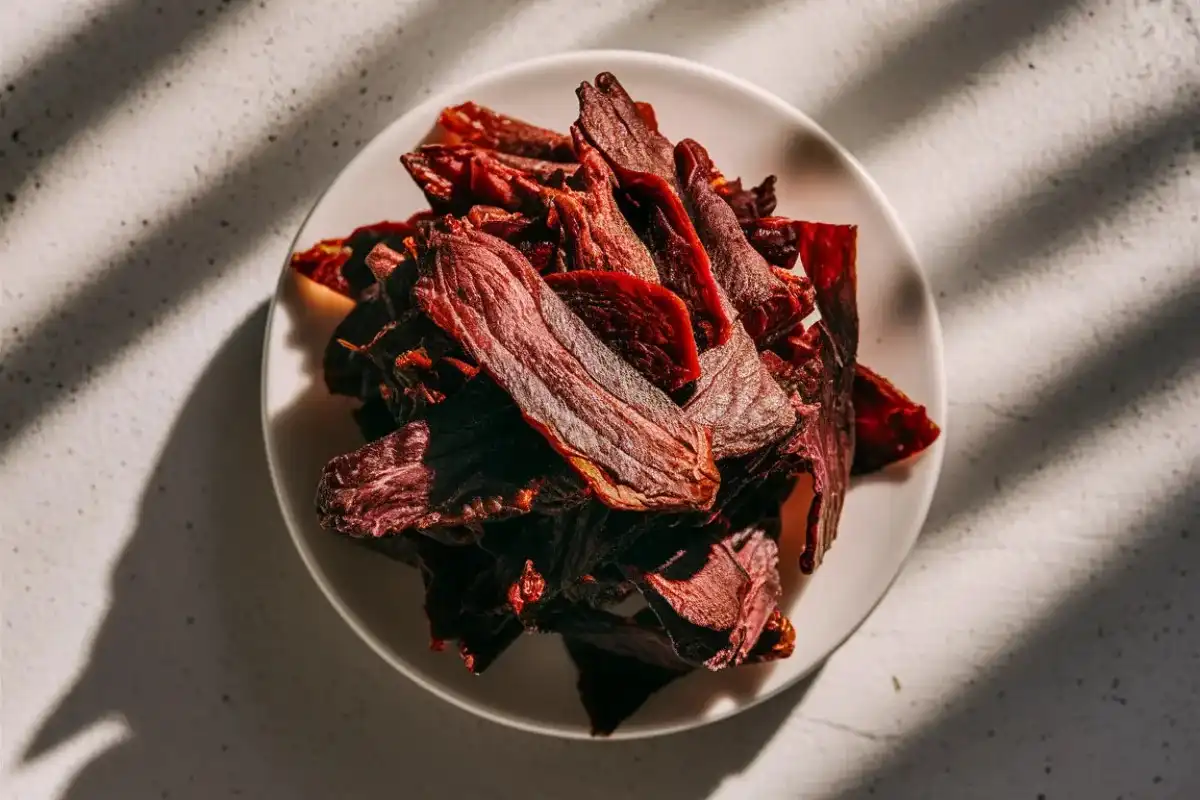Beef jerky is a popular snack worldwide, known for its savory flavor, chewy texture, and convenience as a high-protein option. However, many people wonder whether beef jerky is simply another form of dried beef. While these two products may seem similar, they differ significantly in preparation methods, ingredients, and uses. This article will delve deeply into these differences, covering everything from their historical origins to their culinary applications, and provide a comprehensive understanding of what truly sets them apart.
The History and Origin of Beef Jerky
To understand why beef jerky is not just dried beef, we need to explore its origins. The word “jerky” comes from the Quechuan word “ch’arki,” which means dried or salted meat. Native Americans were some of the earliest known producers of jerky. They developed this method to preserve meat without refrigeration, especially useful during hunting and long journeys where storing fresh meat was impossible. The process involved slicing lean cuts of meat into strips, marinating them with salt, and drying them in the sun or over a low fire.
Over time, this preservation technique spread to different cultures and regions, each adapting their variations to suit local tastes. In South America, for example, people used the process to make “charqui,” which included other types of meat beyond beef. Meanwhile, in Europe, similar methods produced dried meats such as “biltong” in South Africa and “prosciutto” in Italy, with distinct differences in preparation and flavoring.
Modern Beef Jerky: How It’s Made Today

Modern beef jerky preparation has evolved with advances in food technology, yet it remains grounded in its original principles of dehydration and preservation. Here’s how manufacturers produce beef jerky today:
- Selecting the Meat: Producers choose high-quality, lean cuts of beef, such as top round, bottom round, sirloin tip, or flank steak. They prefer lean meat because it reduces the risk of spoilage and results in a more durable end product.
- Marinating the Meat: You marinate the meat in a combination of salt, spices, and sometimes sweeteners like sugar or honey. This marinade not only flavors the meat but also acts as a preservative. Spices commonly used include black pepper, garlic powder, onion powder, soy sauce, Worcestershire sauce, and liquid smoke, which adds a distinct smoky flavor.
- Drying the Meat: After marinating, the meat strips go onto racks in a dehydrator or an oven set to a low temperature, usually around 160-175 degrees Fahrenheit (70-80 degrees Celsius). The drying process can take several hours, depending on the thickness of the meat and the desired texture.
- Packaging the Jerky: Once you fully dehydrate the jerky, it cools and you package it in airtight containers or vacuum-sealed bags to extend its shelf life. The packaging often includes oxygen absorbers to prevent spoilage.
Unlike dried beef, which often contains minimal additional flavorings and usually serves as an ingredient in recipes, manufacturers specifically design beef jerky as a portable, ready-to-eat snack. Producers flavor, dry, and package beef jerky to provide a quick, satisfying option, especially for outdoor enthusiasts, travelers, and those looking for a convenient source of protein.
What Exactly is Dried Beef?
Dried beef can refer to several types of preserved beef, depending on regional and cultural contexts. In the United States, people often call it “chipped beef” or “cured beef.” This product consists of thinly sliced, lean cuts of beef that are salted and air-dried. Unlike beef jerky, dried beef typically undergoes minimal seasoning, relying primarily on salt as a preservative.
How Dried Beef is Made:
- Choosing the Meat: Producers often use lean cuts like eye of round, which is both economical and low in fat. The lean nature of the meat ensures proper drying and reduces spoilage risk.
- Salting the Meat: The meat cures in a mixture of salt and, occasionally, other spices. This curing process may take several days, allowing the salt to penetrate the meat thoroughly. In some cases, a brief smoking session adds flavor.
- Drying the Meat: The cured meat air dries in a cool, controlled environment. This drying process is slower and less intense than the dehydration method used for jerky, resulting in a different texture and flavor profile.
- Slicing and Packaging: Once you dry the beef, you thinly slice and package it, often vacuum-sealing or canning it for a longer shelf life.
Unlike beef jerky, which serves as a snack on its own, people more often use dried beef as an ingredient in recipes. People commonly include it in dishes such as creamed chipped beef on toast, soups, casseroles, and sauces, where its salty flavor enhances the overall taste.
Differences in Production Methods
Examining the production methods clarifies why beef jerky is not just dried beef. The differences in preparation, ingredients, and intended use create distinct products:
- Marination vs. Curing: To create beef jerky, producers marinate the meat in a mixture of spices, salt, and sweeteners, which adds complex layers of flavor. For dried beef, the curing process usually involves only salt, with few additional seasonings.
- Dehydration vs. Air Drying: Jerky undergoes dehydration using low heat and sometimes smoke, which results in a chewy texture. In contrast, dried beef dries through air exposure, often without heat, leading to a different texture that is typically softer.
- End Use: People enjoy beef jerky as a ready-to-eat snack straight out of the package. Dried beef, however, is intended for use as an ingredient in recipes.
Differences in Texture and Moisture Content
Texture and moisture content are significant factors that set beef jerky apart from dried beef:
- Beef Jerky: The dehydration process gives beef jerky a low moisture content, creating a chewy, sometimes tough texture. The lack of moisture also extends its shelf life, making it ideal for situations where refrigeration is unavailable.
- Dried Beef: Dried beef retains more moisture compared to beef jerky, resulting in a softer texture. Because you don’t fully dehydrate dried beef, it has a shorter shelf life and you must keep it in cool conditions to prevent spoilage.
Differences in Flavor Profile: Beef Jerky vs. Dried Beef
- Flavor of Beef Jerky:
- Beef jerky features a robust, bold flavor resulting from its marinade. The combination of spices, salt, and sweeteners creates a complex taste. Consumers can find various flavor profiles, such as teriyaki, spicy, smoky, and sweet.
- The use of liquid smoke or actual smoking during the drying process adds a unique smoky flavor often associated with beef jerky. This flavor, combined with the chewiness of the meat, offers a distinct taste experience.
- Flavor of Dried Beef:
- Dried beef has a milder, more straightforward flavor. Since it typically contains only salt and, occasionally, light smoke, its taste is less complex than that of beef jerky.
- The simplicity of dried beef’s flavor makes it versatile for use in various recipes, where it can complement other ingredients without overpowering them. For this reason, dried beef often appears in soups, stews, casseroles, and creamed chipped beef.
Culinary Uses of Beef Jerky
People primarily consume beef jerky as a snack, but it has many other uses beyond its traditional role:
- On-the-Go Snack: Due to its long shelf life, portability, and high protein content, beef jerky makes an ideal snack for outdoor activities like hiking, camping, and road trips. It provides a quick energy boost and stores easily without refrigeration.
- Emergency Food Supplies: Because of its durability, people often include beef jerky in emergency food supplies, military rations, and survival kits. It offers a reliable source of nutrition in situations where fresh food is unavailable.
- Culinary Ingredient: While less common, beef jerky can serve creatively in recipes. Cooks can chop it up and add it to salads, use it as a topping for soups, or incorporate it into stews for a smoky, savory flavor. Jerky can also rehydrate and serve in dishes where a unique flavor profile is desired.
Culinary Uses of Dried Beef
Dried beef has a different range of uses compared to beef jerky:
- Classic Dishes: Dried beef plays a key role in traditional dishes like creamed chipped beef on toast, a popular comfort food. It provides a salty, savory flavor that pairs well with creamy sauces and gravies.
- Soups and Stews: Dried beef works well in soups and stews, where it contributes a rich, beefy flavor. Its low moisture content allows it to absorb the broth’s flavors while still providing a meaty texture.
- Casseroles: In casseroles, dried beef adds both flavor and texture, complementing vegetables, cheeses, and sauces. It often appears in layered dishes or as a topping for added savory notes.
- Sandwiches and Wraps: You can use thinly sliced dried beef in sandwiches and wraps to provide a concentrated beef flavor that pairs well with fresh ingredients like lettuce, tomatoes, and cheese.
Common Misconceptions About Beef Jerky and Dried Beef

Several misconceptions contribute to the confusion between beef jerky and dried beef:
- Misconception 1: “Beef Jerky is Just Dried Beef”
- While both are preserved meats, people marinate and dehydrate beef jerky, which gives it a unique flavor, texture, and shelf life. In contrast, dried beef usually involves curing and air drying to maintain a more natural beef flavor.
- Misconception 2: “All Dried Meats are Beef Jerky”
- Not all dried meats qualify as beef jerky. Numerous dried meat varieties exist worldwide, each with unique preparation methods and cultural significance. For example, in South Africa, people cure biltong with vinegar and spices before air drying it, while in Italy, they dry-cure prosciutto with salt and age it for long periods.
- Misconception 3: “Beef Jerky and Dried Beef Have the Same Shelf Life”
- Because beef jerky contains more salt and undergoes thorough dehydration, it generally lasts longer than dried beef. Dried beef, which retains some moisture, is more prone to spoilage and needs cooler storage.
The Importance of Preservation Techniques
The need for effective preservation techniques led to the creation of both beef jerky and dried beef, but the methods used for each produce very different results:
- Preservation in Beef Jerky:
- Beef jerky stays preserved through dehydration and the use of salt and other preservatives in the marinade. The dehydration process removes nearly all the moisture from the meat, creating an environment where bacteria and mold cannot thrive.
- This process makes beef jerky suitable for long-term storage, even without refrigeration. Packaging also plays a crucial role, with vacuum-sealed bags and oxygen absorbers helping to maintain freshness.
- Preservation in Dried Beef:
- Dried beef stays preserved through salting and air drying. The salt draws moisture out of the meat, and the air-drying process allows it to evaporate. However, since dried beef does not undergo complete dehydration, it retains some moisture, which can reduce its shelf life compared to jerky.
- People often store dried beef in vacuum-sealed packaging or jars to maintain its quality, but it becomes more susceptible to spoilage if you don’t keep it in proper conditions.
Innovations in Beef Jerky and Dried Beef Production
Modern technology has introduced new innovations in beef jerky and dried beef production:
- Flavor Innovations in Beef Jerky:
- Recently, manufacturers have created various flavors for beef jerky. Beyond the traditional original, spicy, and teriyaki, they now offer options like maple bourbon, sriracha honey, and even fruit-infused varieties.
- These innovations respond to consumer demand for variety and healthier choices, leading to the use of natural ingredients, reduced sodium, and organic meats.
- Texture and Cut Variations:
- Producers experiment with different cuts of beef and varying drying times to create new textures. Some companies produce softer, more tender jerky, while others focus on making extremely crunchy jerky for a different snacking experience.
- Packaging Advancements:
- Packaging plays a significant role in maintaining the quality of beef jerky and dried beef. Innovations like resealable bags, moisture absorbers, and vacuum-sealing technology have extended shelf life and improved convenience.
- Environmentally friendly packaging options are also in development to meet the growing interest in sustainability.
Cultural Variations of Dried Meats Around the World
While beef jerky and dried beef are popular in the United States, many other cultures have developed their versions of dried meats:
- Biltong (South Africa): Unlike beef jerky, biltong cures with vinegar and spices before air drying, resulting in a distinct flavor and texture.
- Carne Seca (Latin America): This dried meat is similar to jerky but often includes additional seasonings and appears in dishes like stews and tacos.
- Cecina (Spain and Latin America): Cecina involves drying and salting meat, often from beef or pork, and sometimes smoking. It has a rich, savory flavor and usually comes in thin slices.
- Bresaola (Italy): People air-dry and salt beef to make bresaola, aging it for two to three months until it becomes hard and develops a deep red color. It is typically served in thin slices, drizzled with olive oil and lemon juice.
Why Understanding the Differences Matters

Understanding the differences between beef jerky and dried beef is important for several reasons:
- Culinary Applications: Knowing the unique characteristics of each product allows for better culinary applications. While beef jerky is ideal for snacking and on-the-go consumption, dried beef works better for cooking and adding flavor to various dishes.
- Storage and Preservation: Recognizing the distinct preservation methods helps consumers store these products correctly. Beef jerky can stay at room temperature for extended periods, while dried beef requires cooler storage to prevent spoilage.
- Cultural Appreciation: Understanding the cultural significance and variations of dried meats worldwide fosters appreciation for global culinary traditions and highlights the versatility of meat preservation techniques.
Conclusion
In summary, while people preserve both beef jerky and dried beef, they prepare them using distinct methods, resulting in different textures, flavors, and uses. Beef jerky, with its marinated, dehydrated, and often flavored profile, is a convenient, ready-to-eat snack ideal for various occasions. In contrast, dried beef, usually cured with salt and air-dried, serves as a versatile ingredient in multiple recipes, adding depth and flavor to dishes. To answer the question: No, beef jerky is not just dried beef it is a unique product with its culinary identity.
Exploring the differences between these two types of preserved meat helps us gain a deeper understanding and appreciation for their unique qualities, allowing us to enjoy them in their respective roles, whether as a tasty snack or a flavorful ingredient.

